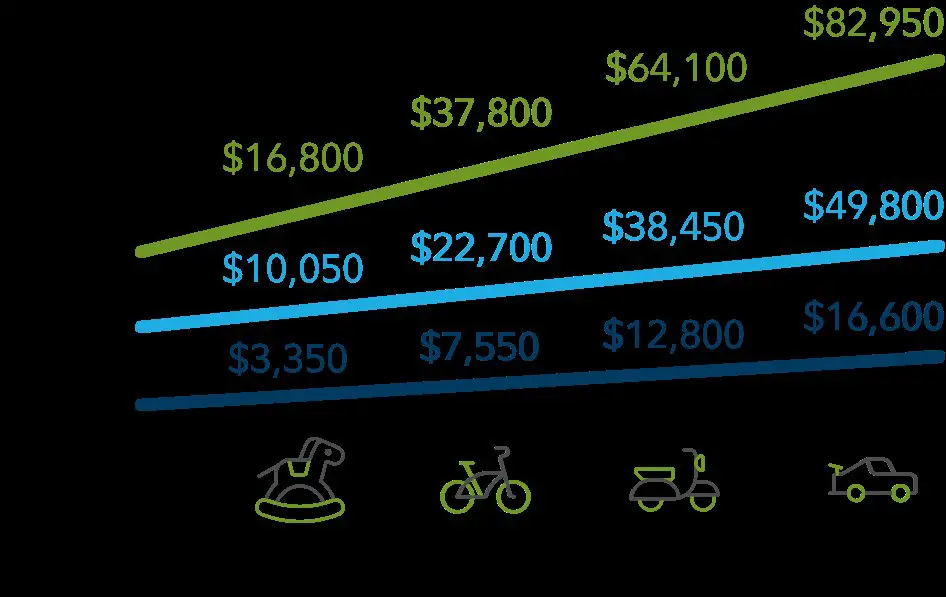Looking to invest in a down market? You’re in the right place. Investing in a market downturn can be intimidating, but it’s not impossible. In fact, it can be a great opportunity for savvy investors to make smart moves and earn significant returns. So how to invest in a down market? Don’t worry, we’ve got you covered. In this article, we’ll discuss some effective strategies and tips to help you navigate the challenges of a down market and make the most of your investments. So let’s dive in and explore the world of investing in a down market together.
How to Invest in a Down Market
Introduction
Investing in a down market can be intimidating, but it also presents unique opportunities for savvy investors. While it may seem counterintuitive to invest when the markets are performing poorly, history has shown that downturns can offer excellent entry points for long-term gains. In this article, we will explore strategies and tips on how to invest in a down market effectively. Whether you are a novice investor or a seasoned pro, these insights will help you make informed decisions and navigate the challenges of a bear market.
Understanding a Down Market
Before diving into investing strategies, it’s essential to understand what a down market entails. In simple terms, a down market refers to a period of declining prices in the financial markets. This can be influenced by various factors, such as economic recessions, geopolitical tensions, or market corrections. During these times, investor sentiment is typically negative, leading to widespread selling and a general decline in stock prices.
While a down market can be unsettling, it’s important to remember that it is a normal part of the market cycle. Markets experience ups and downs, and a down market presents an opportunity to buy assets at a potentially lower price, setting the stage for future growth.
1. Diversify Your Portfolio
One of the fundamental principles of investing is diversification. This strategy involves spreading your investments across different asset classes, such as stocks, bonds, real estate, and commodities. Diversification helps reduce risk by ensuring that a single market downturn does not significantly impact your entire portfolio.
When investing in a down market, it’s crucial to review your portfolio and assess its diversification. Consider rebalancing or allocating a higher percentage towards assets that historically perform well during market downturns, such as bonds or defensive stocks. By diversifying your investments, you can minimize potential losses and increase the likelihood of long-term gains.
2. Dollar-Cost Averaging
Dollar-cost averaging is a strategy that involves investing a fixed amount of money at regular intervals, regardless of market conditions. This approach takes advantage of market volatility by purchasing more shares when prices are low and fewer shares when prices are high. Over time, this strategy can potentially lower the average cost per share and mitigate the impact of short-term price fluctuations.
To implement dollar-cost averaging, set a fixed amount to invest periodically, such as monthly or quarterly. Stick to this schedule consistently, regardless of market conditions. By doing so, you remove the element of emotional decision-making and take advantage of buying opportunities during a down market.
3. Research and Analyze
In a down market, thorough research and analysis become even more critical. Take the time to study potential investment opportunities carefully. Look for companies with strong fundamentals, solid balance sheets, and sustainable business models. Pay attention to industries that are more resistant to economic downturns, such as healthcare, utilities, or consumer staples.
Utilize financial tools, such as stock screeners and analyst reports, to gather relevant data and insights. Consider both qualitative and quantitative factors when evaluating investments. This includes assessing a company’s competitive advantage, management team, and growth potential.
4. Consider Quality Dividend Stocks
Dividend stocks can be an attractive option during a down market. These are stocks issued by companies that distribute a portion of their earnings to shareholders in the form of dividends. Dividends provide a steady income stream, even when stock prices are declining, and can help offset potential losses.
When investing in dividend stocks, focus on companies with a history of increasing dividend payments over time. Look for stable cash flows, strong balance sheets, and a sustainable payout ratio. Dividend aristocrats or companies with a track record of consistently raising dividends for at least 25 years can be particularly appealing.
5. Take Advantage of Exchange-Traded Funds (ETFs)
Exchange-Traded Funds (ETFs) can offer a cost-effective and diversified approach to investing in a down market. These funds pool investors’ money to buy a collection of assets, such as stocks, bonds, or commodities. By investing in ETFs, you gain exposure to a broad range of securities without needing to buy each one individually.
Consider ETFs that track market indexes, such as the S&P 500 or the Dow Jones Industrial Average. These indexes represent the performance of a specific group of stocks and provide a broad market snapshot. ETFs can be particularly useful for novice investors or those with limited time and resources to conduct extensive research.
6. Avoid Emotional Decision-Making
Investing in a down market can evoke strong emotions, such as fear and uncertainty. It’s crucial to avoid making impulsive decisions driven by these emotions. Emotional decision-making often leads to buying high and selling low, which is the opposite of successful investing.
Stick to your investment plan and maintain a long-term perspective. Remember that market downturns are temporary, and history has shown that markets eventually recover. Focus on the fundamentals of the investments you hold and make informed decisions based on research and analysis.
7. Seek Professional Advice
If you find it challenging to navigate a down market or feel overwhelmed by the investment process, seeking professional advice can be beneficial. Financial advisors can provide valuable insights, personalized guidance, and expertise tailored to your specific financial goals and risk tolerance.
When selecting a financial advisor, consider their qualifications, experience, and fee structure. Look for advisors who prioritize your best interests and have a fiduciary duty to act in your favor. A trusted advisor can help you stay disciplined during market downturns and make informed decisions based on your long-term financial objectives.
Investing in a down market requires a strategic approach, discipline, and a long-term perspective. By diversifying your portfolio, implementing dollar-cost averaging, conducting thorough research, and considering quality dividend stocks and ETFs, you can position yourself for success. Remember to avoid emotional decision-making and seek professional advice when needed. Investing in a down market can present opportunities for growth and help you build wealth over time.
FAQs
Please refer to the FAQ section for answers to common questions about investing in a down market.
How to Invest in DOWN Markets
Frequently Asked Questions
Frequently Asked Questions (FAQs)
Question 1: How can I invest in a down market?
Investing in a down market can be a smart move if done strategically. To invest in a down market, consider the following steps:
- Evaluate your financial goals and risk tolerance.
- Do thorough research on potential investment options.
- Diversify your portfolio to mitigate risks.
- Consider dollar-cost averaging by investing a fixed amount regularly.
- Focus on long-term gains and avoid making impulsive decisions based on short-term market fluctuations.
Question 2: What are some investment options in a down market?
In a down market, consider the following investment options:
- Stocks: Look for undervalued companies with strong fundamentals.
- Bonds: Invest in high-quality bonds with steady interest payments.
- Real Estate: Look for properties with potential for long-term appreciation.
- Exchange-Traded Funds (ETFs): Consider diversified ETFs that track broad market indices.
- Dividend-paying Stocks: Focus on companies with a history of consistent dividend payments.
Question 3: Should I time the market when investing in a down market?
Timing the market is extremely difficult, even for experienced investors. Instead of trying to time the market, it’s generally recommended to focus on long-term investing strategies. By investing consistently over time and staying disciplined, you can benefit from dollar-cost averaging and potentially reduce the impact of short-term market downturns.
Question 4: What are the benefits of investing in a down market?
Investing in a down market can have several benefits:
- Potential to buy assets at lower prices and benefit from future appreciation.
- Opportunity to diversify your portfolio and rebalance asset allocation.
- Possibility of higher returns over the long term.
- Ability to take advantage of discounted investments.
Question 5: How should I handle the emotional aspect of investing in a down market?
Investing in a down market can be emotionally challenging. Here are some tips to handle the emotional aspect:
- Stay informed and educated about market trends to make rational decisions.
- Avoid making impulsive decisions based on short-term market fluctuations.
- Maintain a long-term perspective and focus on your investment goals.
- Consider seeking advice from a financial advisor to guide you through market turbulence.
Question 6: What are some potential risks of investing in a down market?
Investing in a down market carries certain risks, including:
- Potential for further market decline and loss of capital.
- Increased volatility and fluctuations in prices.
- Market sentiment impacting investment values.
- Difficulty in selling investments at desired prices.
Question 7: How can diversification help in investing during a down market?
Diversification is crucial when investing in a down market. By spreading your investments across different asset classes, industries, and regions, you can potentially reduce the impact of a downturn on your overall portfolio. Diversification aims to balance risk and reward, as different investments may perform differently under various market conditions.
Question 8: What is dollar-cost averaging and how can it be beneficial in a down market?
Dollar-cost averaging is an investment strategy where you invest a fixed amount of money at regular intervals, regardless of market conditions. This approach can be beneficial in a down market because it allows you to buy more shares when prices are low and fewer shares when prices are high. Over time, this can result in a lower average cost per share and potentially higher overall returns.
Final Thoughts
In conclusion, investing in a down market can be a smart strategy for long-term success. By following a few key principles, investors can navigate volatility and potentially capitalize on opportunities. Firstly, it is essential to maintain a diversified portfolio to spread risk and enhance potential returns. Secondly, maintaining a long-term perspective and avoiding emotional decision-making can help investors stay focused on their goals. Additionally, considering defensive sectors and quality dividend stocks can provide stability in turbulent markets. Lastly, consulting with a financial advisor can offer valuable insights and guidance tailored to individual circumstances. When it comes to investing in a down market, it is crucial to stay informed, stay disciplined, and stay the course.



